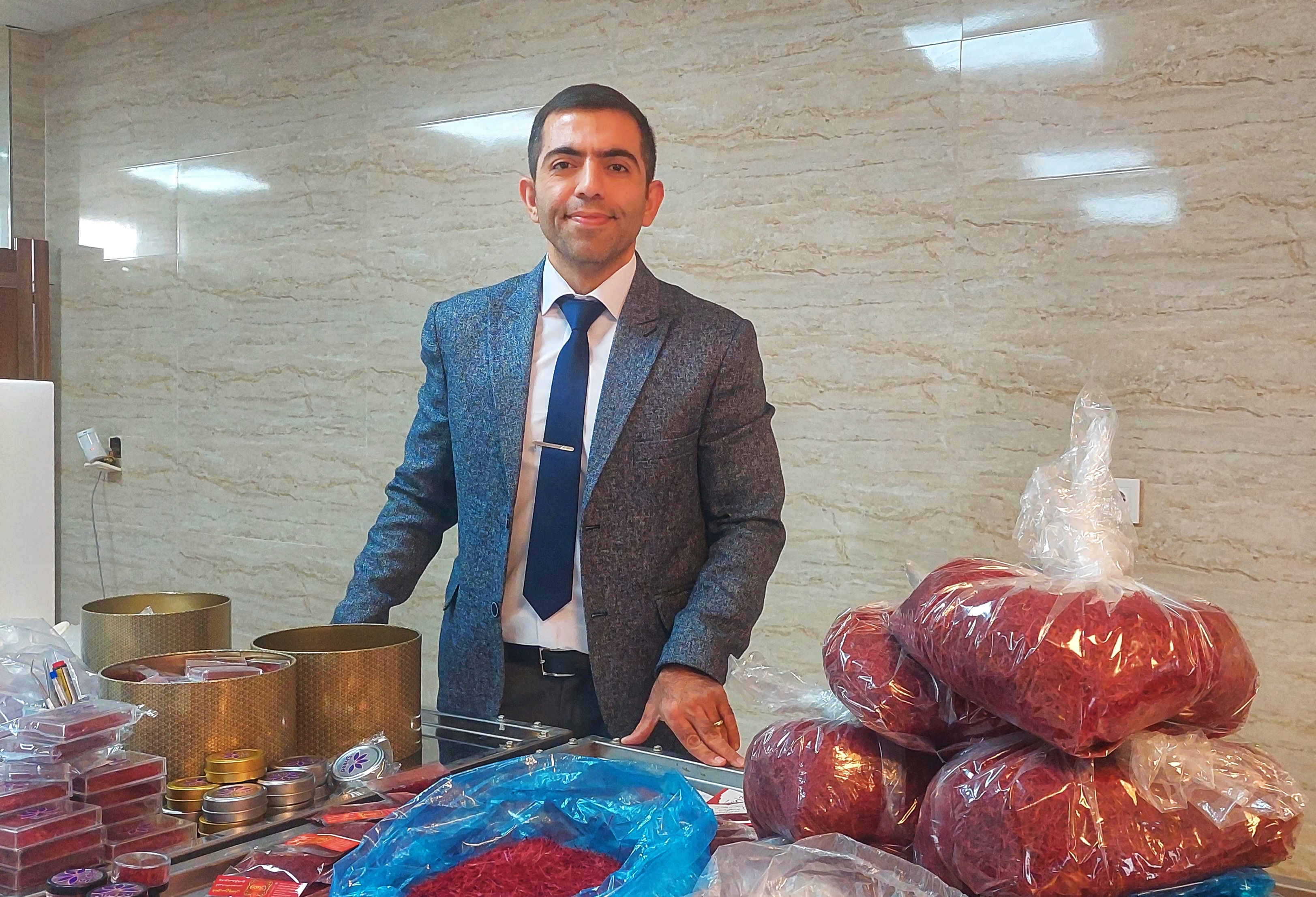Categories
The latest content
-

Iranian Super Negin Saffron in India; 2025 Wholesale Prices, Market Trends, and Consumer Preferences
..
-

Optimal Storage Conditions for Iranian Sultana Raisins; A Complete Guide for Importers and Distributors
..
-

Takestan, The Beating Heart of Raisin Production in Iran
..
-

How Iranian Rice Cultivation and Harvesting Is Interwoven with Tradition and Culture in Gilan Province
..

Tags
Iranian Super Negin Saffron; Wholesale Prices, Market Trends, and Consumer Preferences in China

Iran is the world's largest producer and exporter of saffron, and its Super Negin grade is considered the highest quality of saffron available. When it comes to the wholesale price of Iranian Super Negin saffron in China, several factors influence the pricing structure, including the grade of the saffron, quantity, packaging, and market conditions.
Current Price Trends
The wholesale price of Iranian Super Negin saffron in China has been fluctuating due to a combination of domestic and global factors. In 2023, the price for bulk Iranian saffron ranged from $2,400 to $2,780 per kilogram, depending on the quality and packaging. Super Negin saffron, being the highest grade, is typically priced at the upper end of this range. Smaller quantities and premium packaging can see prices going higher.
One of the key factors influencing the price of saffron is the supply-demand imbalance. While Iran continues to be the dominant supplier of saffron, fluctuations in annual harvests, primarily due to climatic factors like drought, impact the supply of high-quality saffron. In 2023, Iran's saffron production decreased by around 20% due to severe droughts, leading to a surge in prices .
Key Export Trends
As one of Iran's largest trade partners, China has seen a significant increase in saffron imports over the years. In 2023, it was reported that China imported approximately 28,000 kilograms of saffron from Iran, worth over $33 million. Much of this saffron was in bulk packaging, which is attractive to businesses in China looking to package it for retail sale or use in food products (tridge.com).
This increase in trade reflects the growing popularity of saffron in China, not only as a spice for traditional dishes but also for its health and wellness applications. This demand from various sectors has led to a more competitive market, pushing prices higher due to both the premium quality of Iranian saffron and the rising interest from consumers and businesses alike.
Market Trends in China
The Chinese market for saffron is evolving, with an increasing demand for high-quality products, especially from Iranian suppliers. Some of the most prominent trends include:
1. Health and Wellness Integration
China's growing focus on health and wellness has directly influenced the saffron market. Traditionally used as a spice in Chinese cuisine, saffron is now being increasingly integrated into functional foods and beverages. Saffron is recognized for its health benefits, including improving mood, aiding digestion, and promoting skin health. It is also gaining popularity in the form of dietary supplements, such as saffron extract capsules and teas (fhafnb.com).
This trend is reflective of the broader shift in China towards health-conscious consumption, where consumers are seeking natural, organic, and functional ingredients. Saffron, with its natural antioxidant properties, fits well into this market, and companies are increasingly looking to position it as a premium health product.
2. Cosmetic and Pharmaceutical Applications
Beyond culinary use, saffron is becoming more prevalent in cosmetics and skincare products in China. Its antioxidant, anti-inflammatory, and skin-brightening properties are highly sought after by both manufacturers and consumers. Saffron is commonly found in face masks, creams, serums, and lotions, marketed as luxury skincare products.
In the pharmaceutical sector, saffron is also being explored for its potential health benefits, including its ability to improve mood, reduce stress, and even act as an anti-cancer agent. This growing interest in the medicinal properties of saffron further drives demand, making it an attractive product for pharmaceutical companies in China (gminsights.com).
3. E-Commerce and Online Platforms
The rise of e-commerce platforms has also played a significant role in the saffron market in China. With increasing internet penetration and a shift towards online shopping, consumers are now able to purchase saffron directly from suppliers, bypassing traditional retail channels. Online marketplaces such as Alibaba, JD.com, and Tmall have become major platforms for selling Iranian saffron to Chinese consumers.
This shift to online platforms not only increases consumer access to saffron but also allows for greater transparency and easier comparison of prices. Consumers are now more informed about the different types of saffron available, making them more likely to seek out premium products like Super Negin saffron, which offers superior quality compared to other grades.
Consumer Preferences in China
Chinese consumers are becoming more discerning when it comes to the products they buy, especially in the food and wellness sectors. When it comes to saffron, several consumer preferences have emerged:
1. Preference for Premium Quality
Among the various grades of saffron, Iranian Super Negin saffron is considered the highest quality, and this is reflected in the growing preference for it in the Chinese market. Super Negin saffron is distinguished by its long red stigmas, which are thicker, more potent, and have a deeper color and stronger aroma than other grades. This makes it highly desirable for both culinary and health applications.
Chinese consumers are increasingly willing to pay a premium for saffron that meets these high-quality standards, and suppliers are focusing on ensuring that their saffron meets the stringent quality expectations of the Chinese market.
2. Shift Toward Organic and Authentic Products
There is a growing trend in China towards organic and natural products, and saffron is no exception. Consumers are becoming more aware of the potential risks associated with pesticides and chemical fertilizers in agricultural products, and as a result, organic saffron is gaining popularity. Authenticity is also a significant factor, with Chinese consumers placing high importance on the origin and quality of the saffron they purchase.
As demand for organic and authentic products rises, Iranian saffron exporters are increasingly offering certified organic saffron to meet this demand.
3. Packaging and Consumer-Friendly Sizes
While bulk packaging remains the dominant format for wholesale buyers, there is a growing demand for smaller, consumer-friendly packaging. In major urban centers like Beijing, Shanghai, and Guangzhou, consumers are looking for smaller-sized packages of saffron, often in 1-gram or 5-gram containers. These smaller packages cater to individual consumers and are often marketed as premium, high-value items. Packaging innovations, such as vacuum-sealed containers, are also becoming popular to ensure the saffron retains its aroma and potency.
Future Outlook
The outlook for the saffron market in China is promising. The global saffron market is expected to continue growing, with the Chinese market playing a significant role in this expansion. By 2032, the Chinese saffron market is expected to reach $35.67 billion, driven by the increasing use of saffron in the food, health, and cosmetic industries (apollorr.com).
As consumer preferences evolve and the demand for high-quality, organic, and functional products continues to rise, Iranian Super Negin saffron is poised to benefit from these trends. Suppliers and exporters who focus on delivering high-quality, authentic, and well-packaged saffron will likely see continued success in this growing market.



